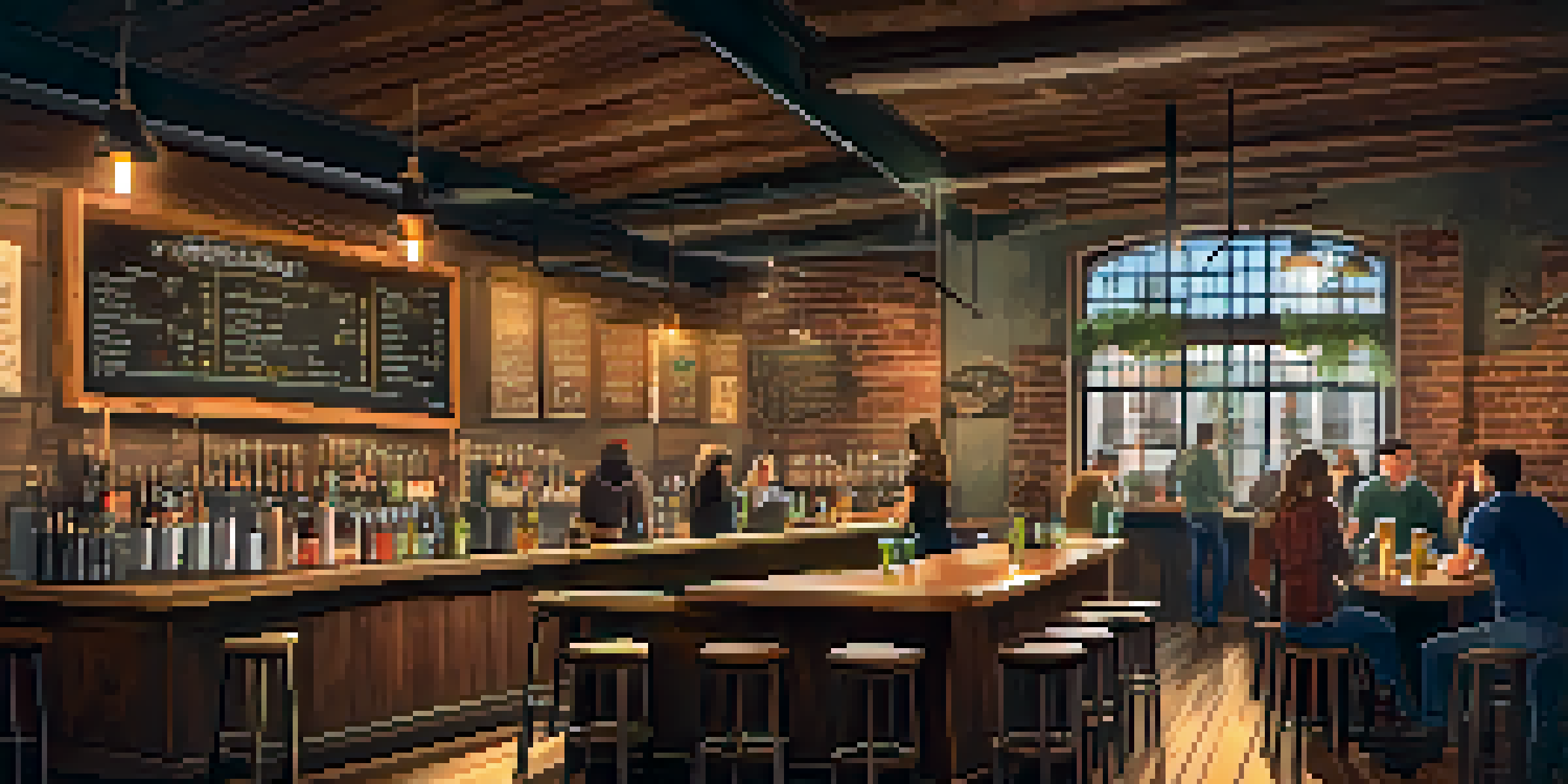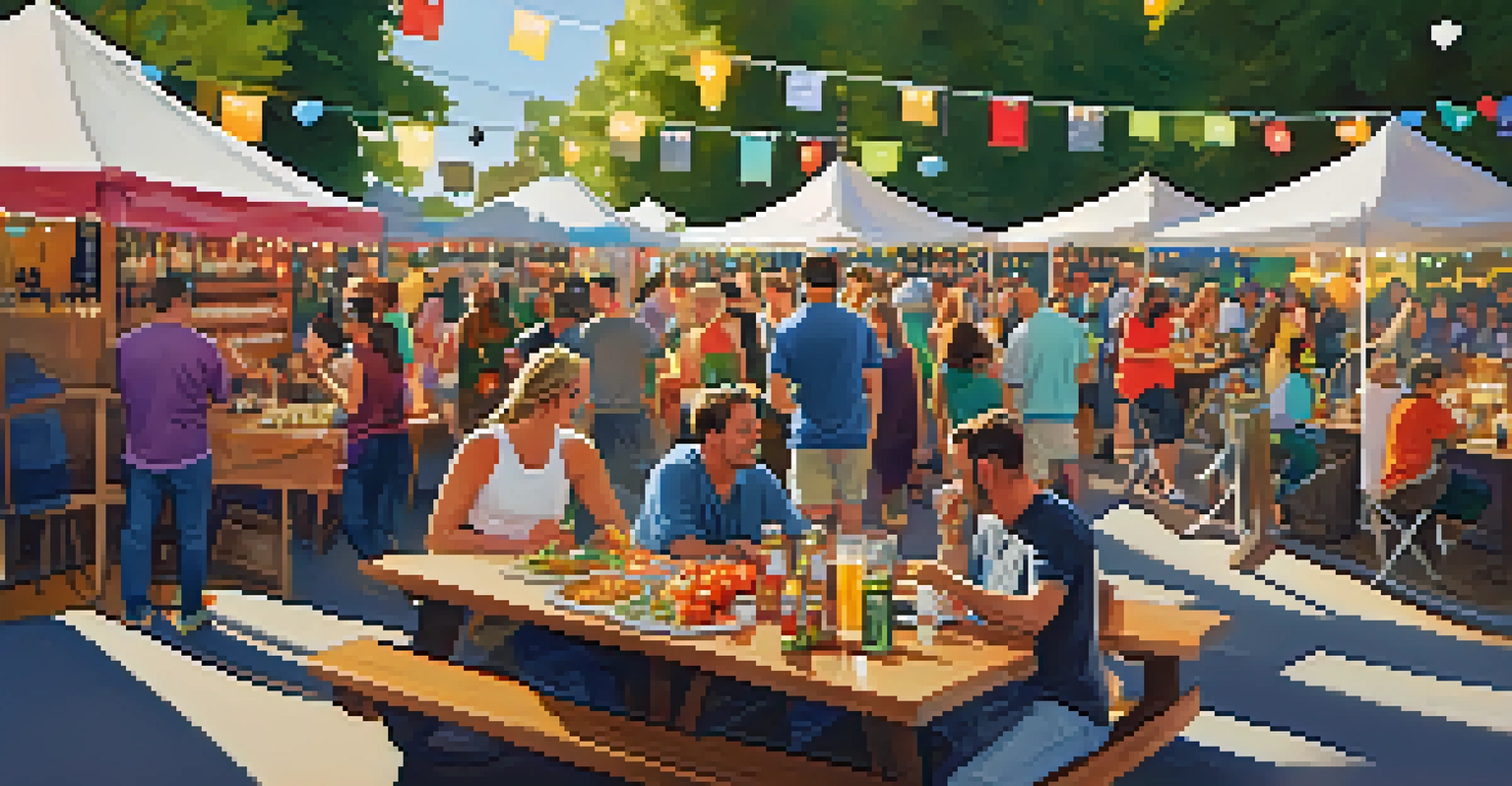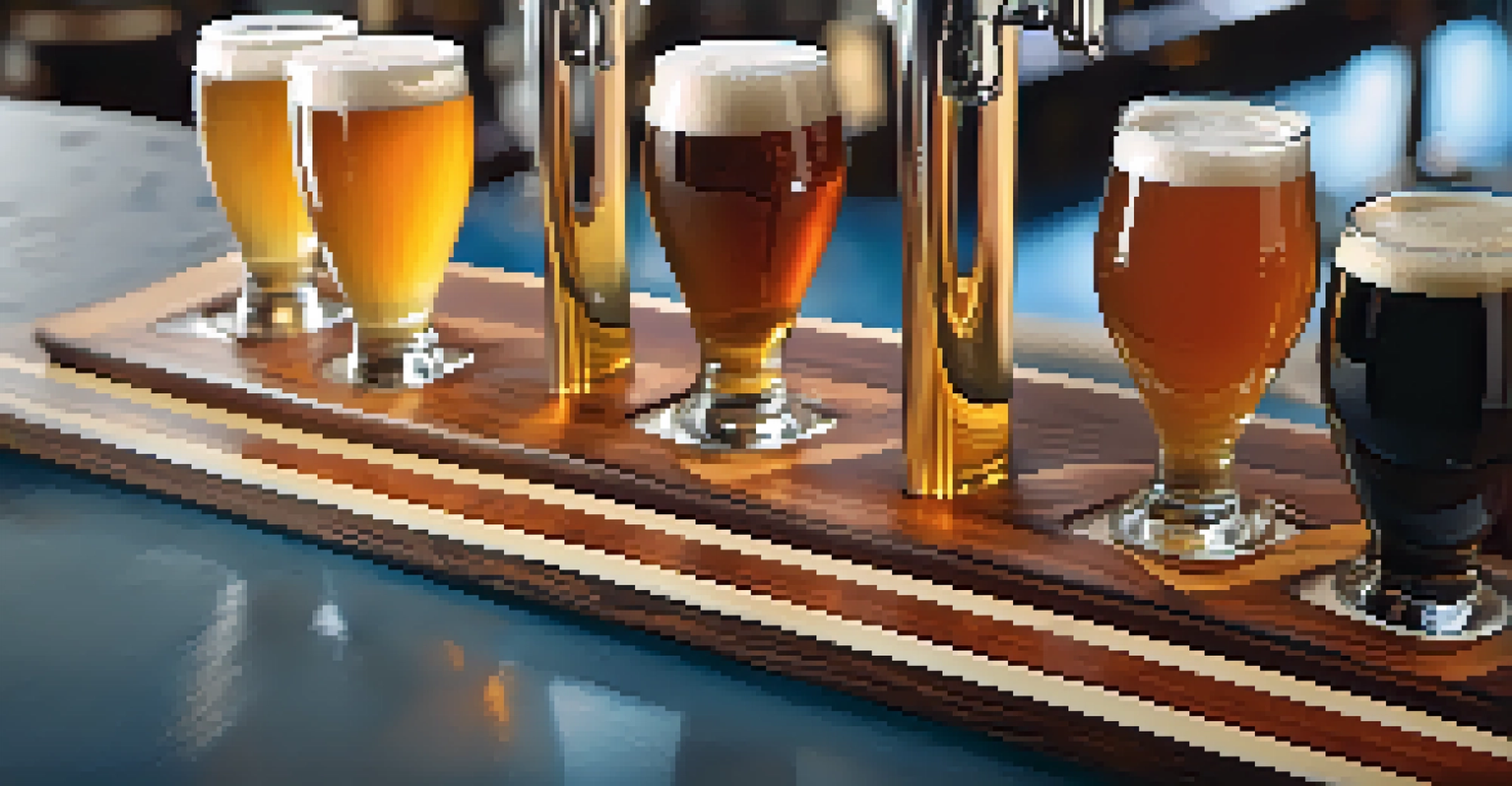The Rise of Craft Breweries and Their Culinary Pairings

The Craft Brewery Boom: A New Era in Brewing
In recent years, the craft beer scene has exploded, with thousands of new breweries popping up around the world. This surge in popularity can be attributed to a growing consumer desire for unique flavors and local products. Craft breweries often prioritize quality over quantity, producing smaller batches that showcase creativity and experimentation.
Craft beer is not just a beverage; it's a way to connect with people, places, and the art of brewing.
With an emphasis on artisanal techniques and innovative ingredients, these breweries have captured the hearts of beer enthusiasts. For instance, many craft brewers are now incorporating local fruits, spices, and even herbs into their brews, resulting in flavors that are as diverse as the regions they come from. This movement has transformed the landscape of beer production and consumption.
Moreover, craft breweries often foster a sense of community, bringing people together through events and tastings. As a result, beer lovers are not just consumers; they become part of a vibrant culture that values quality, sustainability, and creativity.
Understanding Craft Beer Styles and Their Flavors
One of the most exciting aspects of craft beer is the wide variety of styles available. From hoppy IPAs to rich stouts, each style offers its own unique flavor profile. For example, a hoppy IPA might boast citrus and pine notes, while a stout could present rich chocolate and coffee flavors.

These distinct flavor profiles can greatly influence the types of food that pair well with each beer. A crisp lager, for instance, can cleanse the palate alongside fried foods, while a robust porter can enhance the flavors of a rich chocolate dessert. Understanding these pairings can elevate your dining experience.
Craft Beer Drives Local Flavor
Craft breweries enhance local economies and flavors by sourcing regional ingredients, creating unique brews that reflect their surroundings.
As craft breweries continue to innovate, new styles are constantly emerging, making it crucial for beer enthusiasts to explore and taste. This journey through flavors opens up a world of culinary possibilities, where the right beer can enhance the taste of a meal and vice versa.
Perfect Pairings: Craft Beer and Food
Pairing craft beer with food is an art form that can transform both the meal and the drink. The key is to find complementary flavors that enhance each other. For instance, a fruity wheat beer pairs wonderfully with light salads or seafood, while a malty brown ale can add depth to roasted meats.
The best beer is the one you share with friends.
When considering pairings, think about the intensity of both the food and the beer. A bold IPA can stand up to spicy dishes, while a light pilsner might get overshadowed by richer flavors. By matching intensity, you create a harmonious balance that enhances the overall dining experience.
Experimentation is encouraged when it comes to pairing craft beer with food. Don’t be afraid to mix and match! You might discover that a sour ale pairs perfectly with a tangy cheese or that a session IPA complements a spicy curry. The possibilities are endless!
Why Local Ingredients Matter in Craft Brewing
Many craft breweries take pride in sourcing local ingredients, which not only supports local economies but also enhances flavor. Using regional hops, grains, and adjuncts helps create a unique taste that reflects the local terroir. For example, a brewery in Oregon may use hops grown in the Pacific Northwest, giving their beer a distinctive character.
Local ingredients can also foster creativity in brewing. Breweries often experiment with seasonal produce, crafting limited-edition brews that capture the essence of a particular time and place. This approach not only delights consumers but also encourages a deeper connection to the community.
Food and Beer Pairing Trends
The rising trend of pairing craft beer with food elevates dining experiences, encouraging creativity and exploration in both culinary and brewing arts.
Furthermore, pairing these locally sourced beers with regional cuisine creates a beautiful synergy. Imagine sipping a beer brewed with local berries while enjoying a dish featuring those same berries—it’s a celebration of local flavors that enhances both the food and the drink.
The Role of Craft Beer in Culinary Trends
Craft beer has increasingly become a staple in the culinary world, influencing restaurant menus and food trends. Chefs are embracing craft beer not just as a beverage but as an ingredient in their dishes. From beer-battered fish to braised meats cooked with stout, the incorporation of craft beer adds depth and flavor.
This trend reflects a broader movement towards pairing food and drink in thoughtful ways. Diners are now more adventurous, seeking out experiences where food and craft beer complement each other. Consequently, restaurants are curating beer lists that align with their culinary offerings, inviting guests to explore unique pairings.
Moreover, craft beer dinners have become popular events where chefs and brewers collaborate to create multi-course meals, each paired with a specific beer. These events highlight the versatility of craft beer and its role in elevating the dining experience.
Craft Breweries: A Hub for Community and Connection
Craft breweries often serve as gathering places for communities, where people come together to enjoy good beer and great company. Many breweries host events, such as trivia nights and food trucks, fostering a sense of belonging. This communal atmosphere makes craft breweries more than just places to drink; they become social hubs.
These spaces also provide opportunities for local artists and musicians to showcase their talents, further enriching the community experience. By supporting local talent, craft breweries contribute to the cultural fabric of their neighborhoods, creating a vibrant scene that attracts both locals and tourists.
Breweries as Community Hubs
Craft breweries foster community connections by hosting events and supporting local artists, making them vibrant social spaces.
In addition, many craft breweries are dedicated to sustainability and giving back to their communities. They often partner with local charities, participate in clean-up events, or donate a portion of their proceeds to causes they care about. This commitment to community engagement resonates with consumers who value businesses that make a positive impact.
The Future of Craft Breweries and Culinary Innovation
As the craft beer industry continues to grow, so too does the potential for culinary innovation. Breweries are exploring new brewing techniques, ingredients, and flavors, pushing the boundaries of what beer can be. This spirit of experimentation will likely lead to even more exciting beer styles in the future.
Moreover, the trend of pairing craft beer with food will continue to evolve. As consumers become more educated about flavors and pairings, restaurants and breweries will need to adapt to meet these expectations. This dynamic relationship fosters an environment of creativity and collaboration in the culinary world.

Ultimately, the rise of craft breweries and their culinary pairings is a celebration of flavors, community, and innovation. As we look ahead, we can expect to see even more delicious combinations that excite our palates and enrich our dining experiences.